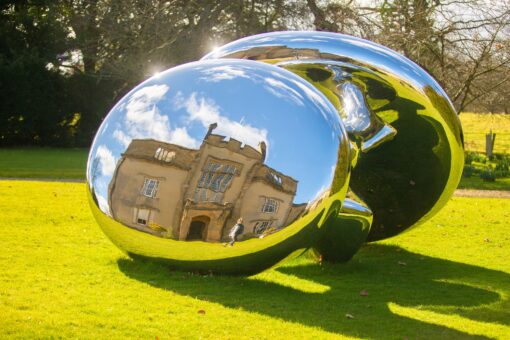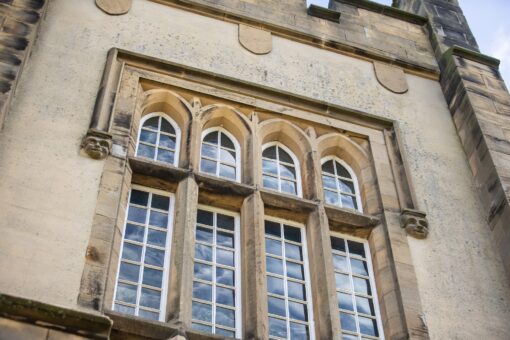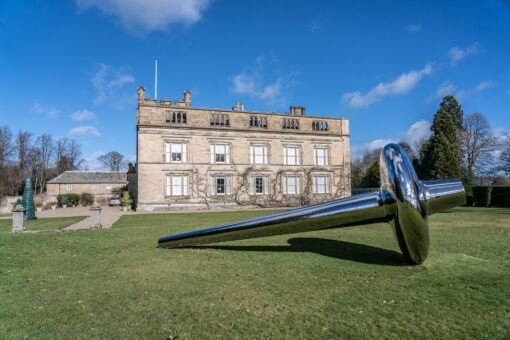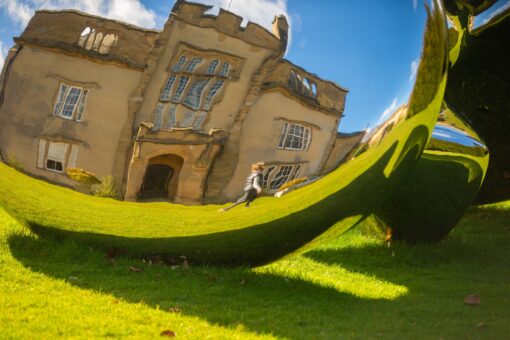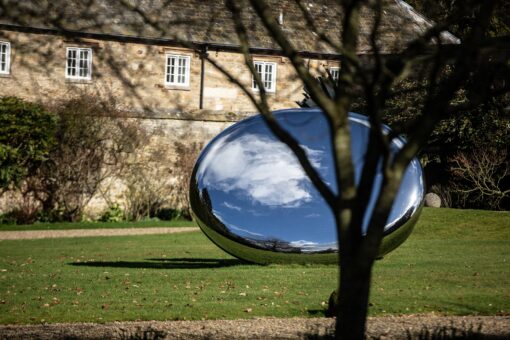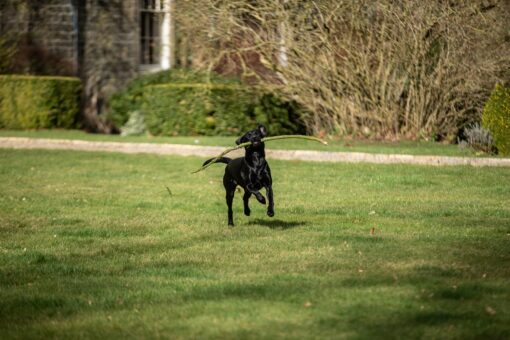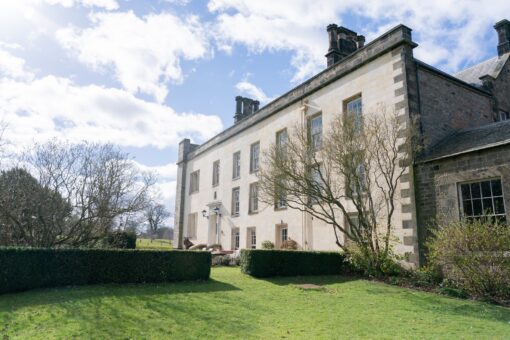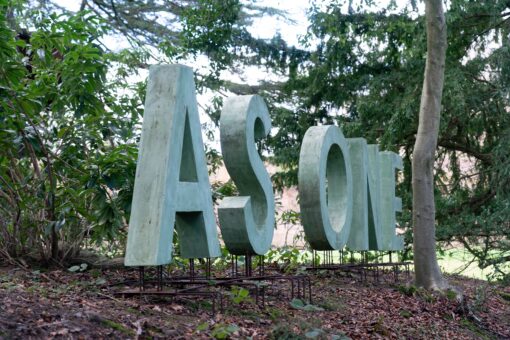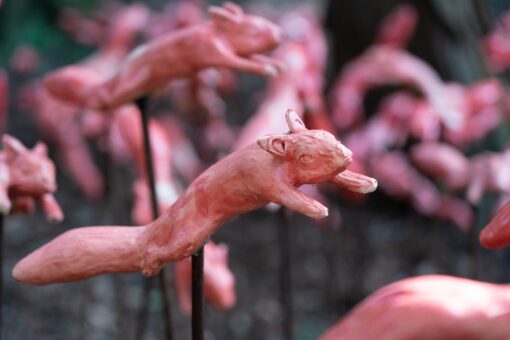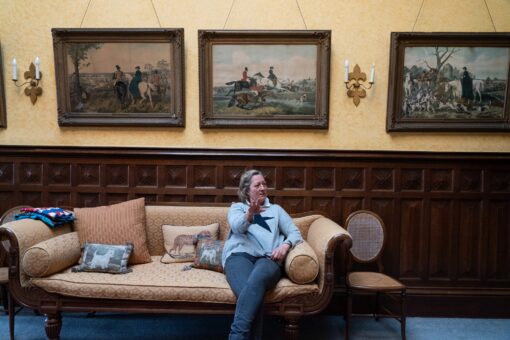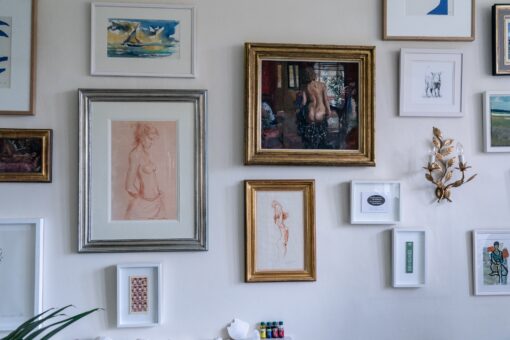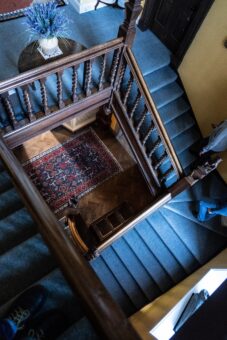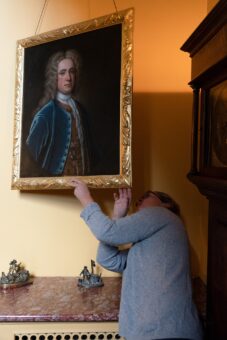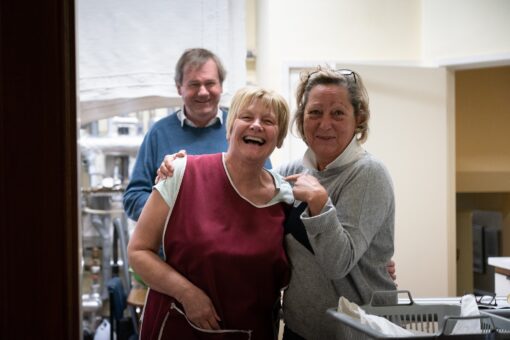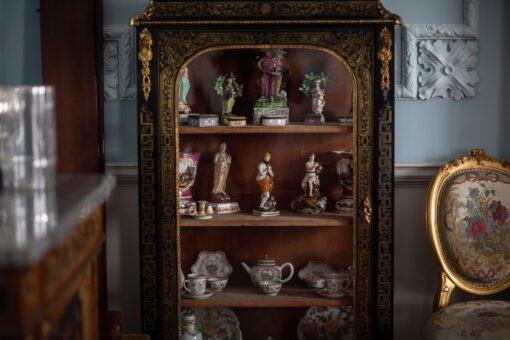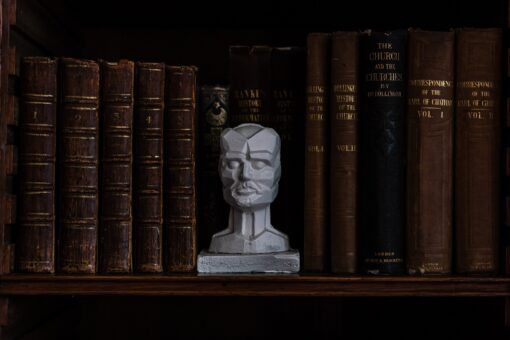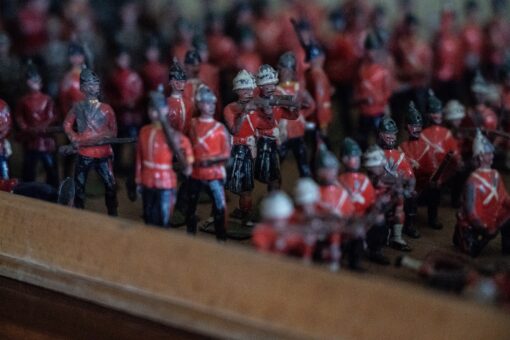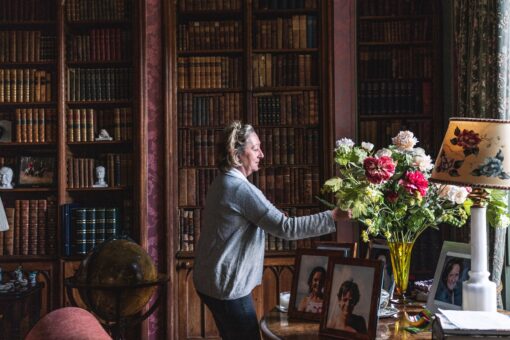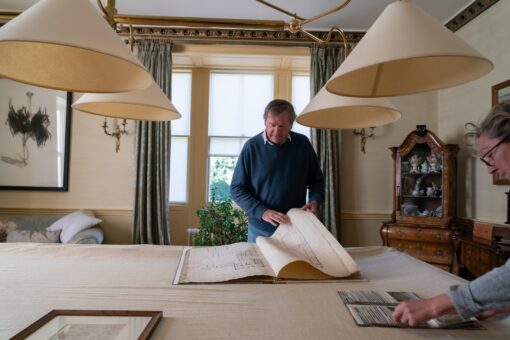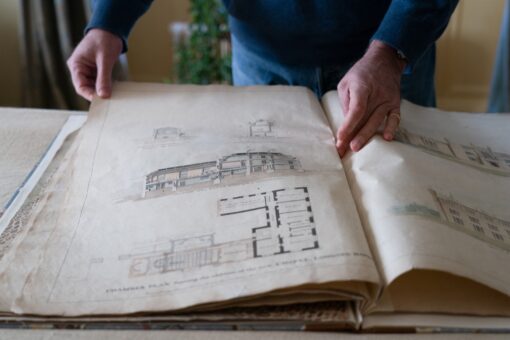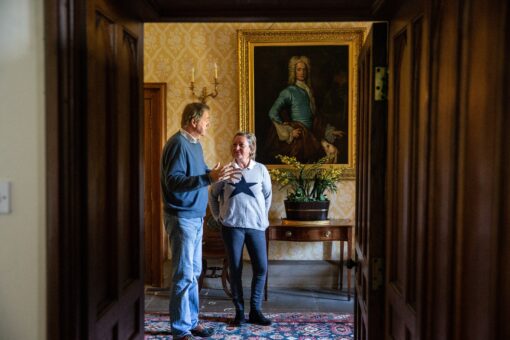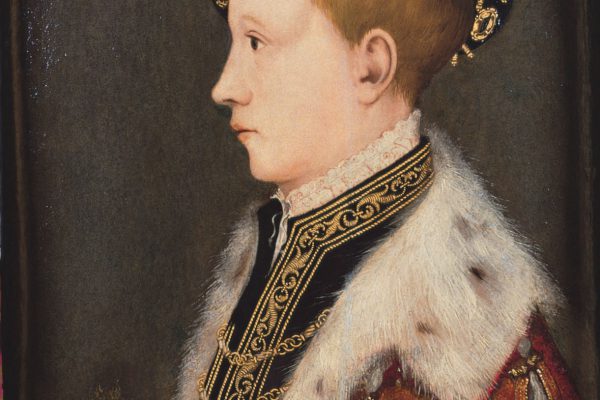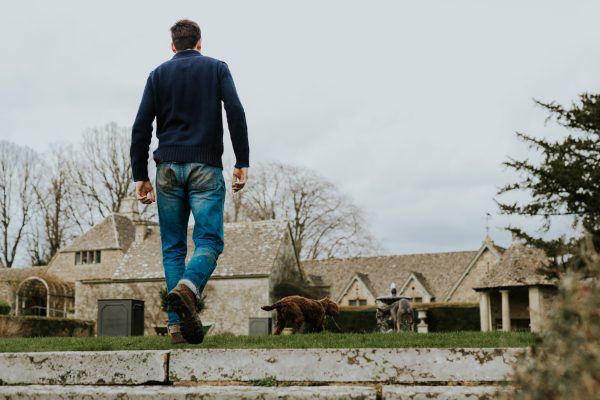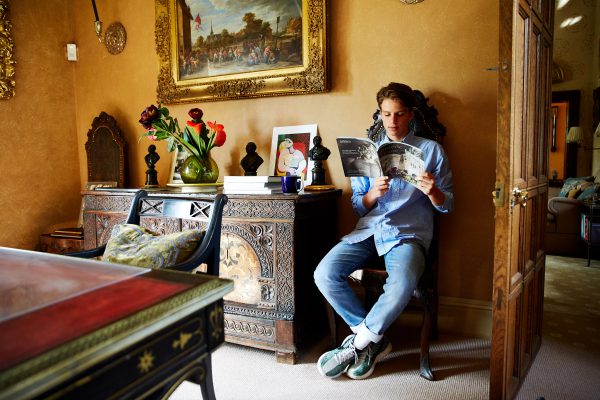Putting the Qi into Cheeseburn
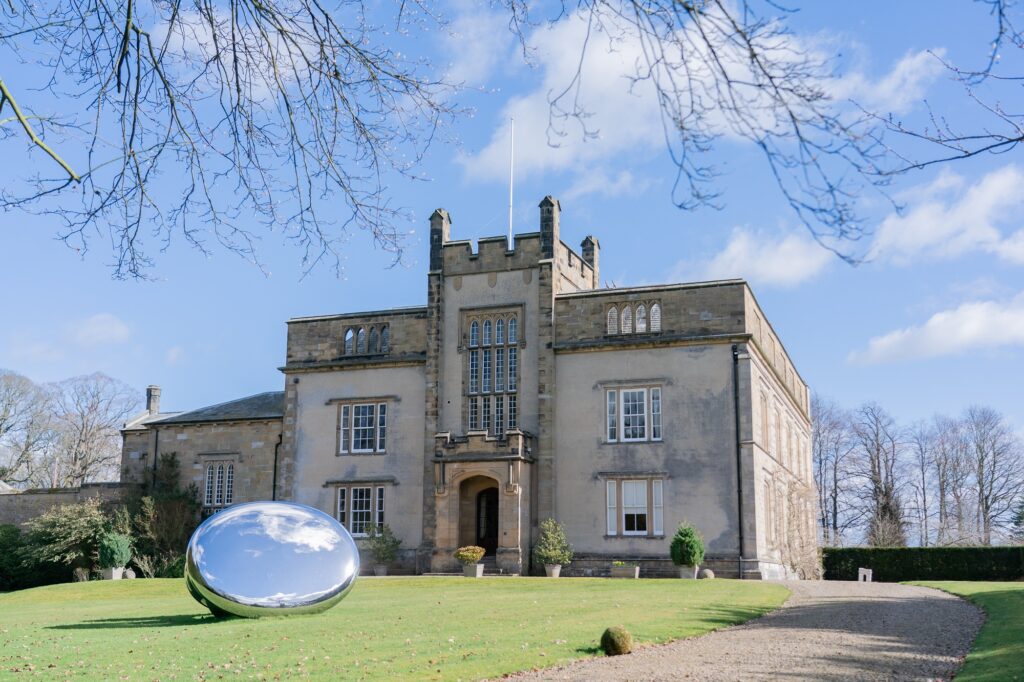
Sarah Greenwood went in search of art in the Tyne Valley near Newcastle and found herself at home with Simon and Jo Riddell at Cheeseburn Grange.
Turning into the drive at Cheeseburn Grange, I step back a century; sheep graze peacefully under spreading parkland trees separated from the gardens by oh-so traditional estate fencing. The house hides behind a colossal yew bush. All is as it should be.
Round the corner and everything changes. The house rears up into a central tower designed by Newcastle’s darling architect, John Dobson, in 1813 but, arrestingly, the facade is reflected in two gigantic stainless-steel globules shimmering on the lawn. Like silver droplets from space, this is one of two hand-beaten sculptures by Chinese artist-of-the-moment Qi Yafeng which grace the front of Cheeseburn. It is impossible not to be excited by the scale of the sculptures and the way that they interact with the elegant exterior of the house. We are definitely in the 21st century now.
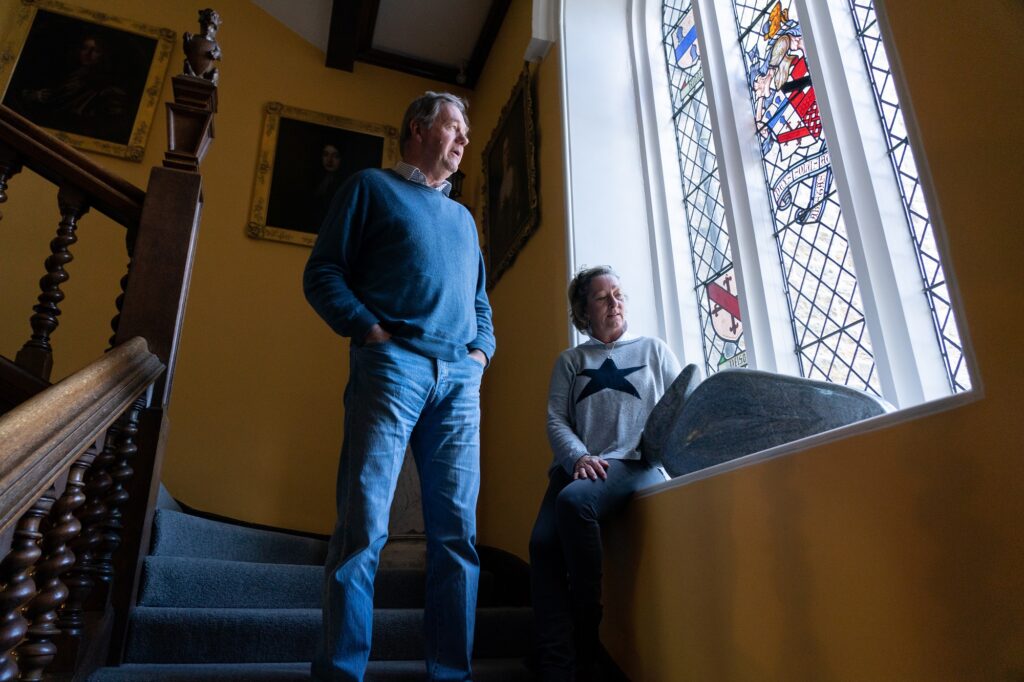
I’m met by Jo and Simon Riddell, who inherited the house from his bachelor uncle in 1992. We turn through what used to be the green baize door and into a spacious kitchen. Here was once a warren of service rooms one storey below a poky 1970s kitchen with no outlook. Yet when Simon and Jo first began to convert this sunny room into the heart of their family home, Simon’s aunt was astonished: ‘You’re going to live below stairs?’ Cheeseburn today is not a stately home; two wings of Victorian extensions were demolished by Simon’s uncle in 1974. The surviving central block preserves John Dobson’s modest improvements to the house, taking it back to its 1813 appearance, while the interiors owe more to the later remodelling by J A Hansom, of Hansom cab fame, in 1870.
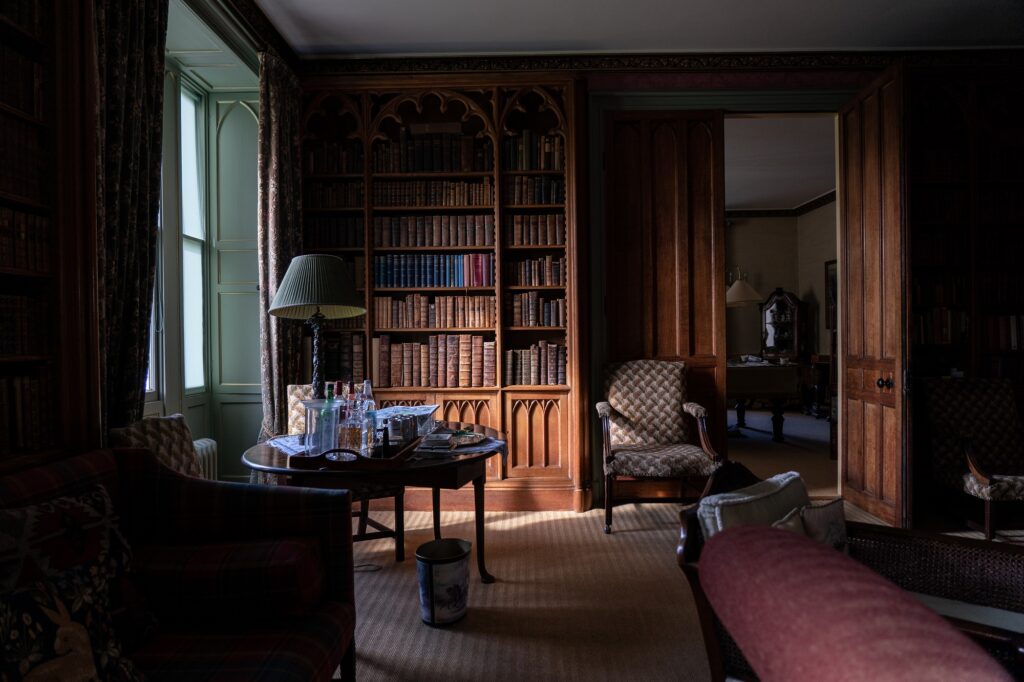
It was Simon’s great uncle’s grandfather who, in 1813, employed Dobson to remodel the house’s plain exterior, raising the height of a 17th century pele tower to form an impressive new entrance and adding a deep balustrade to the roof. Five decades later, Hansom added the now demolished wings and redecorated the interiors in high-Victorian gothic-revival style, adding quatrefoils to the library bookcases and carved heraldic beasts to the staircase. Simon and Jo were faced with having to reconcile the hopelessly outdated house with modern living. They restored the three main reception rooms, researching the original colour schemes and recreating the worn and faded original carpets. Simon explains, ‘We made a decision when we came here, we couldn’t afford to recreate the way it was and nor did we want to, so we just tried do everything well.’
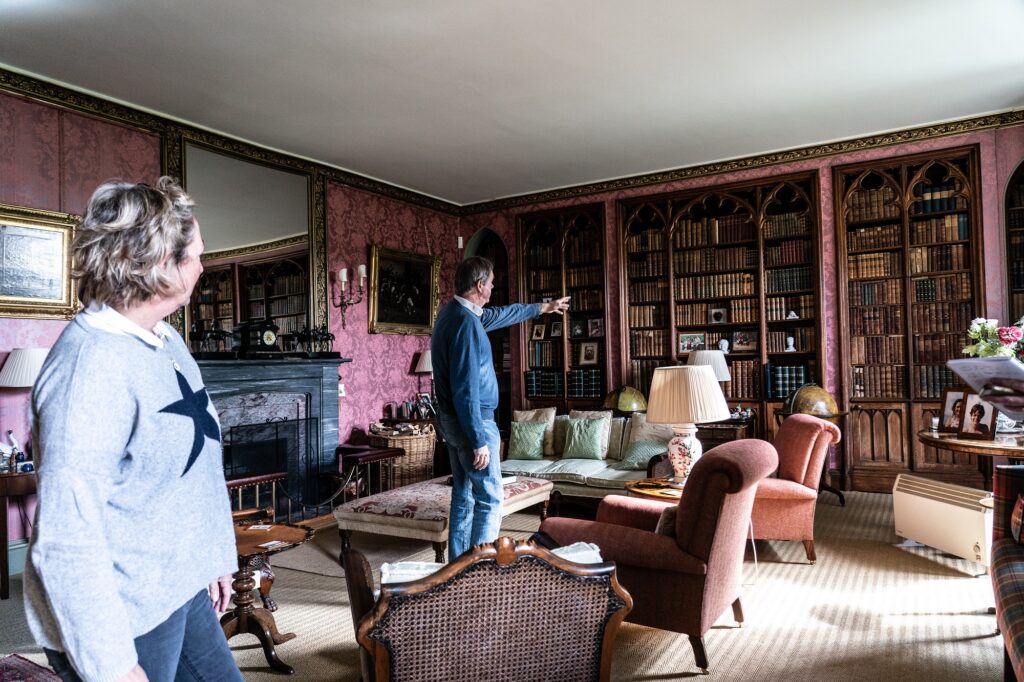
The library makes a warm and cosy drawing room with original curtains from the 1870s and wallpaper reprinted from the original blocks by Cole & Son, researched and sourced by Jo. The sunny dining room is painted a soft powder blue, the 1870s colour of choice, found under layers of later paint. The billiard room is dominated by a Victorian billiard table but the walls are hung with contemporary ink-wash sketches of African animals by Sophie Walbeoffe; Simon was born in Tanzania and East Africa is still a favourite holiday destination.
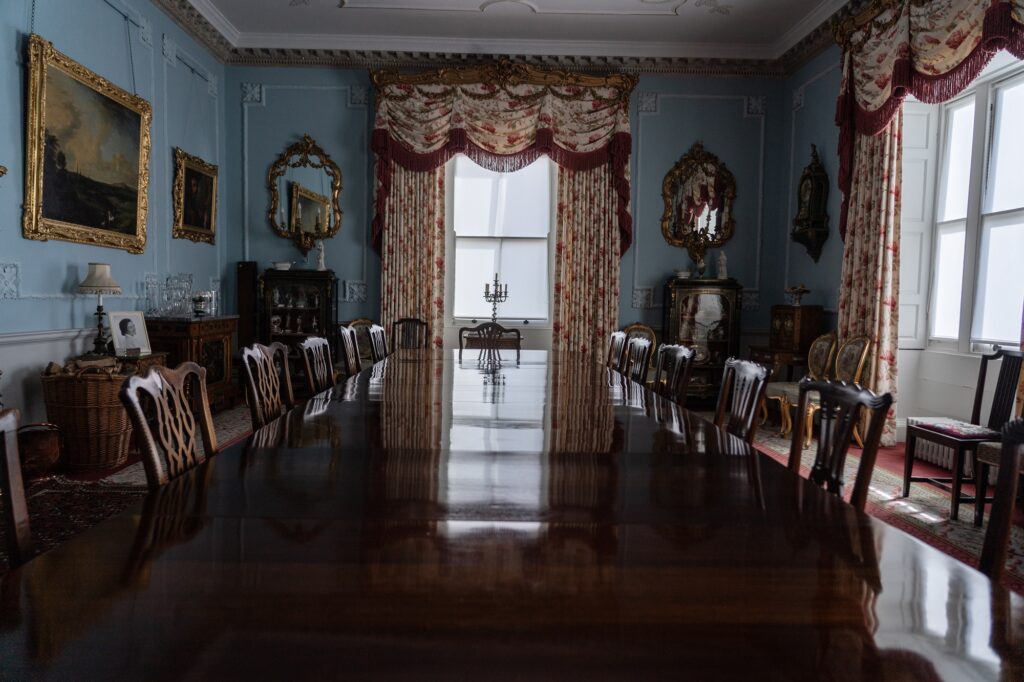
The restoration of the Catholic chapel was Simon and Jo’s ‘Millenium Project’. Its glory is the gothic reredos designed by Hansom which frames a copy by J S Verillin of the centre panel of Rubens’ great altarpiece in Antwerp Cathedral. The painting of the Descent of Christ was so torn and dirty that the characteristic Rubens red was lost; Simon tells me that when the canvas, painstakingly restored by Annabelle Remnant, was unveiled to the congregation there were tears. The chapel was a hub for the local community, with a regular Sunday service until the priest retired last year; now Simon is worried that it may become obsolete. Jo counters by pointing out that the chapel has become an integral part of her sculpture open-days, providing a resonant venue for sound installations.
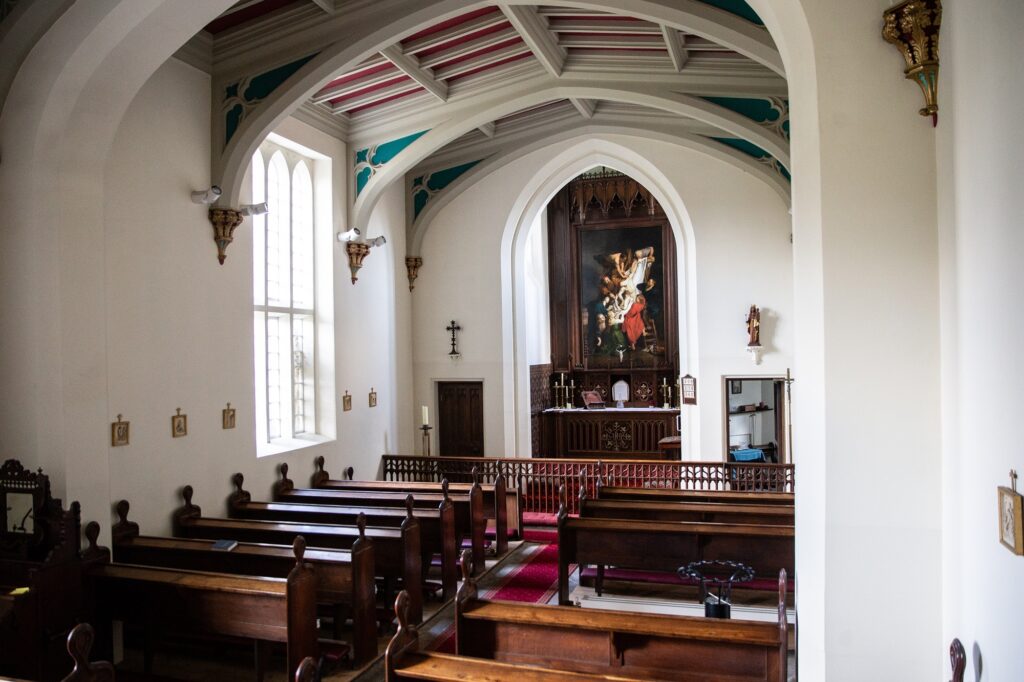
Cheeseburn is small for regular opening to the public. ‘We are not at all grand and definitely not commercial,’ expostulates Simon. But the family are alert to the privileges of living in this lovely house. ‘We tried to bring up our children with a consciousness of how extraordinary it is to live here,’ explains Jo. ‘We really love family Christmases. Cutting down your own Christmas tree and having one that reaches through the whole hall and needs a ladder to reach the top is definitely special.’
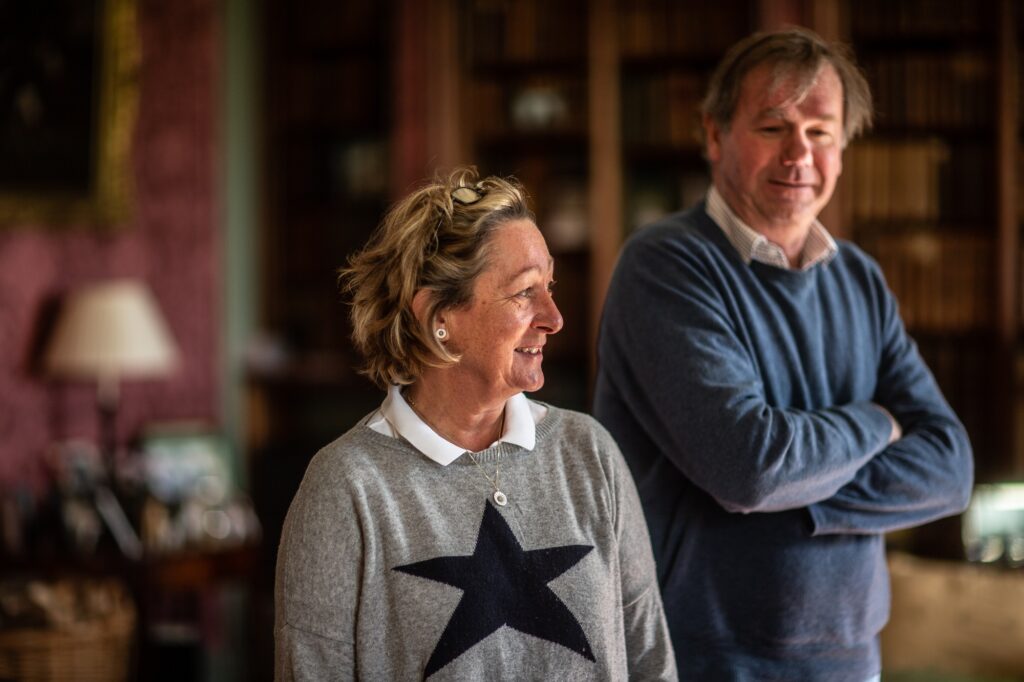
Jo admits now that she found her introduction to Cheeseburn tough. ‘I had never lived in the North East and knew nobody. I needed an Ordnance Survey map for the simplest journey and I had three small children in a freezing house where there wasn’t even a three-pin plug for the hoover upstairs.’ Jo was a county tennis player and found some solace in the tennis court on the back lawn. It is from the gardens at Cheeseburn that she now gets her inspiration.
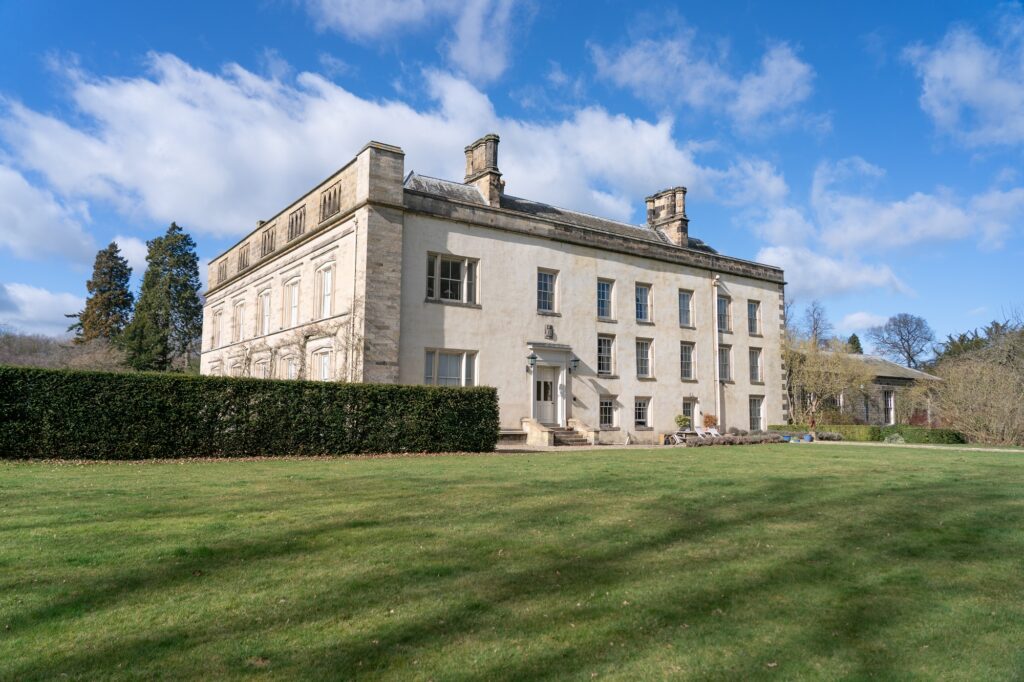
There was not much to the garden when Simon and Jo arrived in 1992. Simon’s uncle took the view that the only suitable plants for a gentleman’s garden were laurel, ivy, holly and yew. Over the years, 11 acres of pleasure grounds have emerged from neglect and Victorian gloom. New borders are bright with roses, clematis and scented perennials. There is a sizable Victorian wilderness, part of Dobson’s landscaping.
The old rose garden has been transformed into a parterre garden centred on the house’s old front door – a stone doorframe dating from 1694 – moved here by Dobson. It features the coat of arms of the Widdrington family flanked by a pair of heraldic spotted bulls from the Widdrington crest. After the house passed by marriage from the Widdrington to the Riddell family in the late 18th century the Widdrington crest was banished to a garden wall.
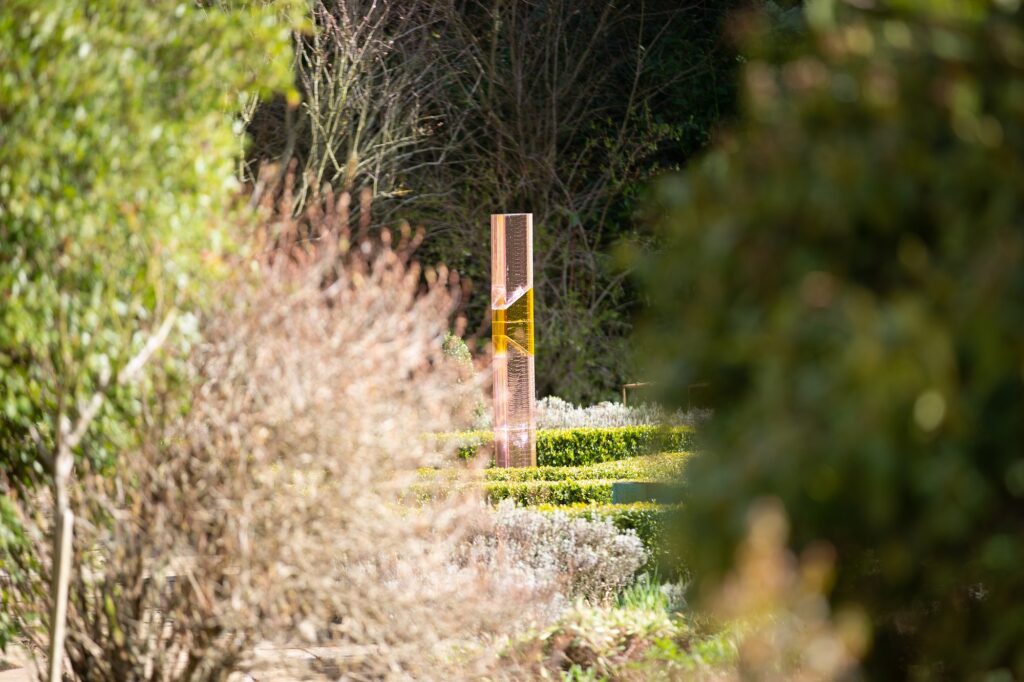
Today, the gardens are a showpiece for Cheeseburn Sculpture, a non-profit foundation which has created a unique showcase for contemporary sculpture in the North East. Sculpture is everywhere in the gardens. Monumental letters spell out ‘Onward Together as One’ in the woodland, a commission for the 2015 Great North Run from sculptors Hope Spedding and Oliver Perry. Round the bend, hundreds of glazed clay-red squirrels race away from their invading grey cousins in an artwork by Dan Gough entitled Scurry.
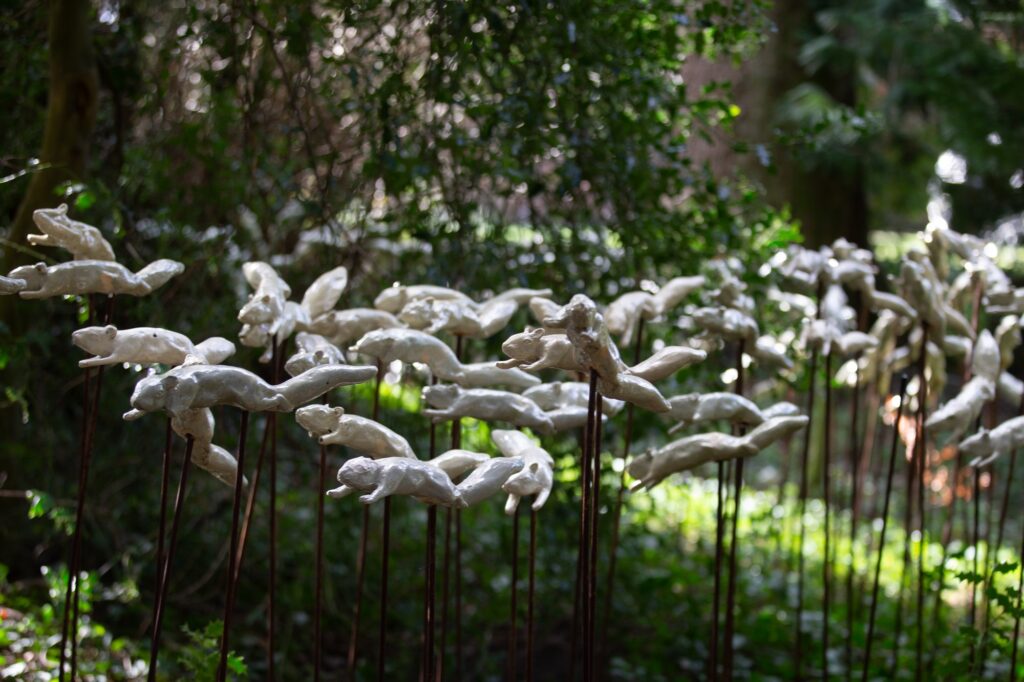
‘We enjoyed real red squirrels here for a very long time but we have now been overrun with greys,’ explains Jo sadly. Sunlight bounces off a glass sculpture by Cate Watkinson in the parterre garden; rays falls in coloured triangles onto the woodland floor from Laura Johnson’s sculpture, Enlighten; Edd Ravn’s word sculptures blend with the texture of the brickwork in the Walled Garden.
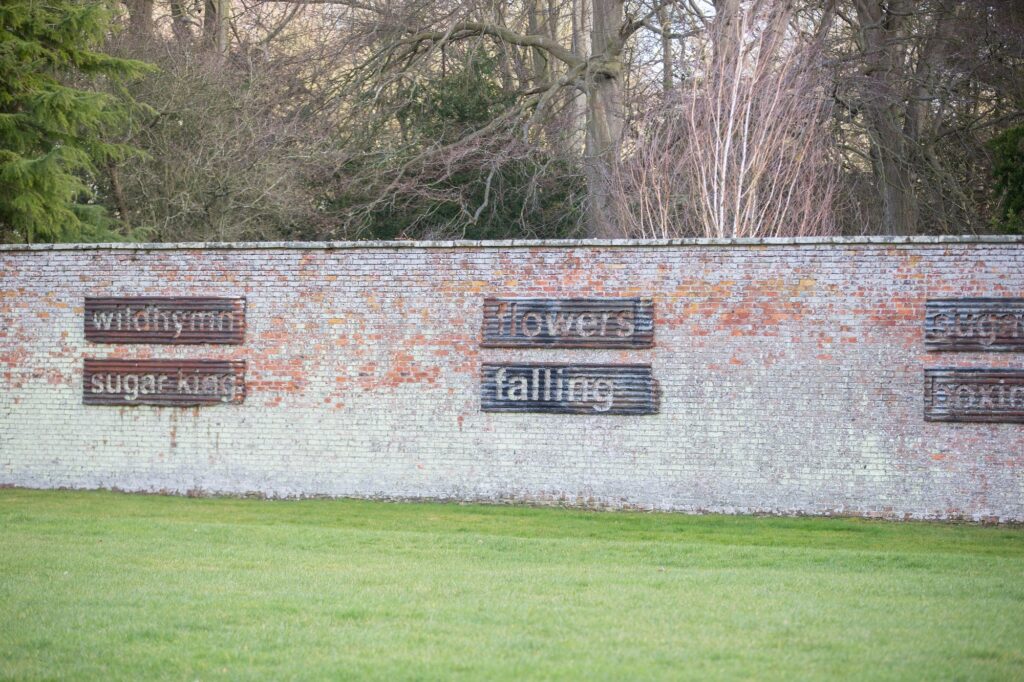
Cheeseburn Sculpture is Jo’s baby, run from the bright white space of her office in the Stables Gallery, converted from old courtyard buildings. Jo has been supported by curator Matthew Jarratt and by local sculptor Joseph Hillier, recently in the news as the creator of Britain’s largest cast bronze sculpture. The two large elements of Hillier’s work Lure are prominent in the parterre garden today. Jo’s first gallery show featured Royal Academician David Mach, whose stature as an artist really established Cheeseburn’s reputation.
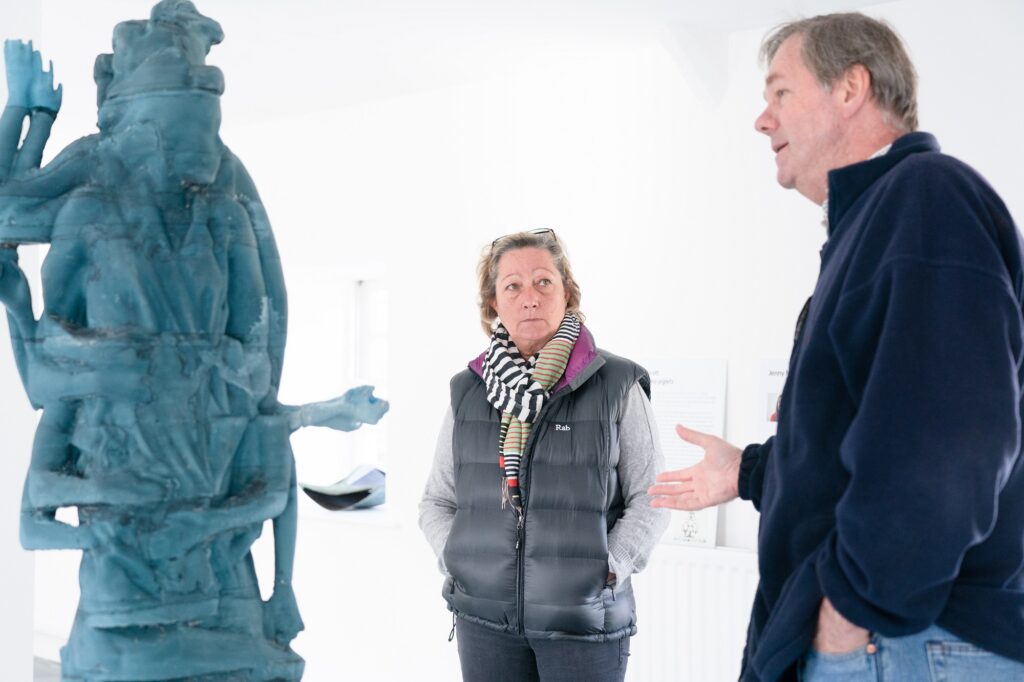
Cheeseburn Sculpture holds a series of open weekends each year and hosts the annual Gillian Dickinson North East Young Sculptor award. Jo sees her role as a facilitator for talent. ‘I try to make the exhibitions about other people by facilitating something new. I feel that I am providing a platform that allows the energy that is out there to express itself.’ She is in her element as she shows off the interplay between the historic surroundings of the gardens at Cheeseburn with the organic shapes of the sculpture, pointing out with delight the effects of light and texture.
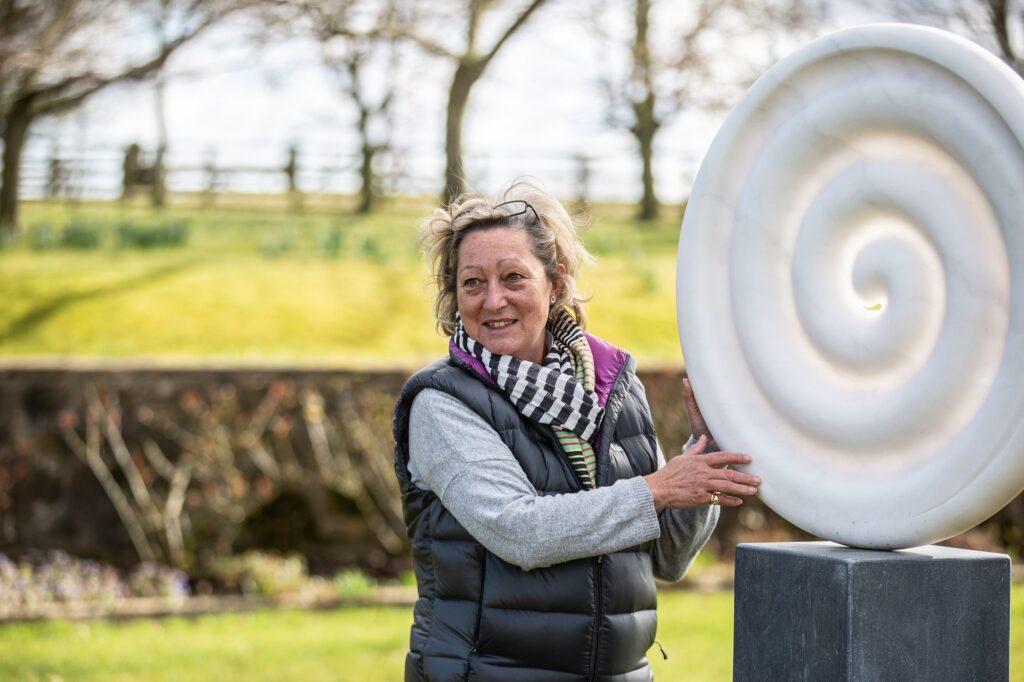
The open weekends attract around 4,500 visitors each year; they come for art and stay for tea and cakes and to stroll in the gardens. Cheeseburn Sculpture has expanded to encompass an advisory service for new commissions and sales of sculptural work on open days. This summer’s Simon Hitchens exhibition will be sure to attract notice as the artist explains the concept behind his large-scale sculpture, The Elizabeth Landmark: Ascendant, commissioned by Viscount Devonport as a tribute to Her Majesty the Queen.
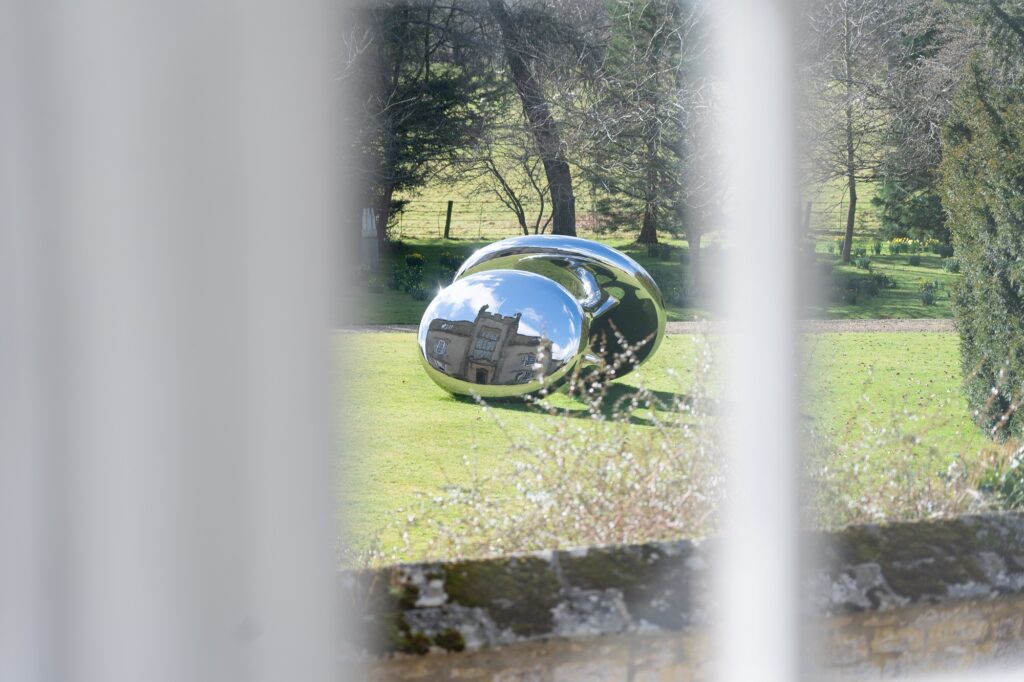
There is a real sense of dynamism here. The restored house is an updated and comfortable family home, the Catholic chapel still has a strong pull for the local community and the new buzz is sculpture. Jo looks reflectively at the full height wellingtonias that tower over the Qi Yafeng works. ‘I planted a few wellingtonia seedlings five years ago. One day they will be as tall as those. After all, if we are not looking beyond our lifetimes, what are we doing here?’
The house is not open but the gardens and Cheeseburn Sculpture open on pre-advertised weekends in spring and summer.
Cheeseburn Grange is a member of Historic Houses. Our members can read more articles like this in their quarterly magazine, online and in print.
Photography by Sean Elliott for Historic House magazine. Copyright Historic Houses.

